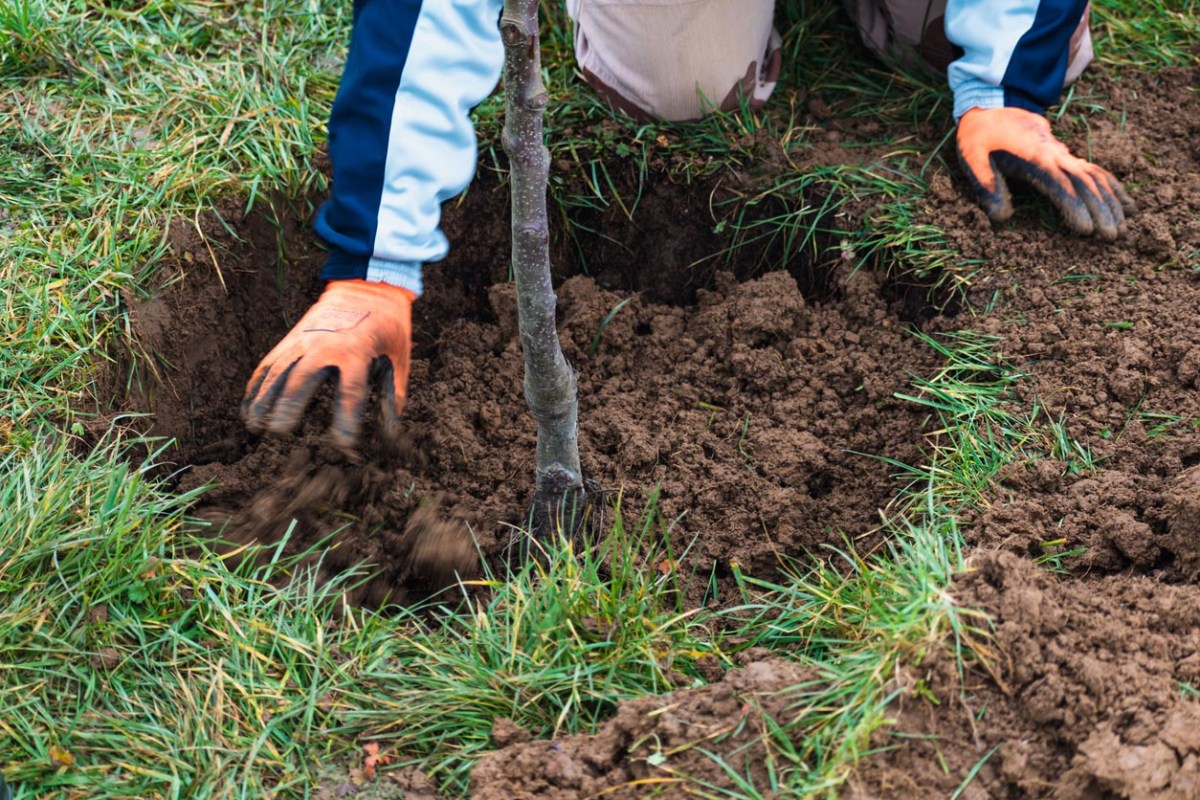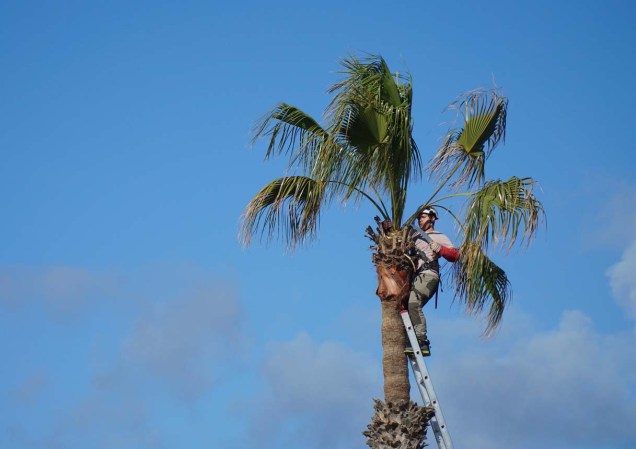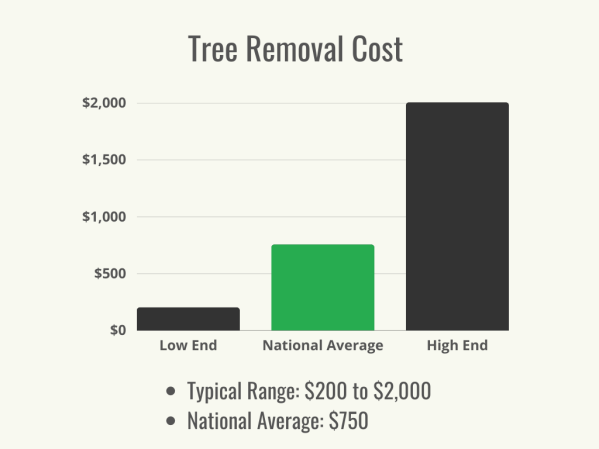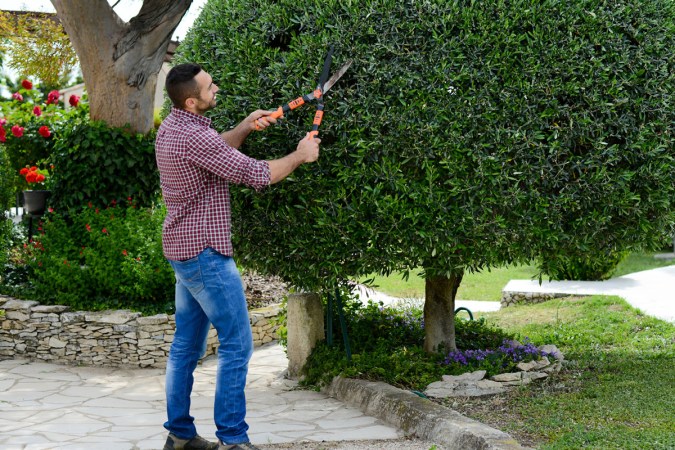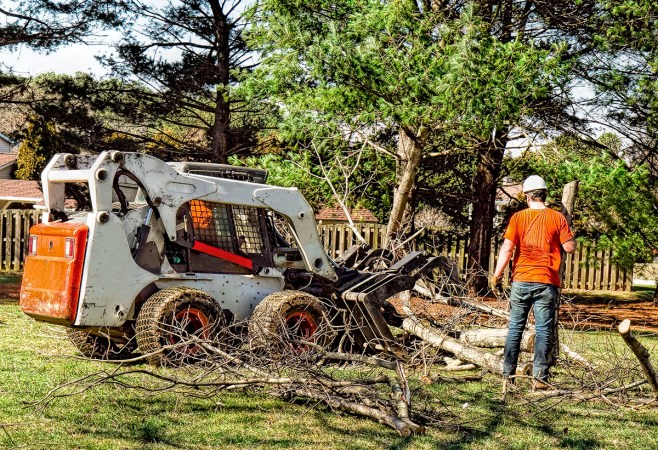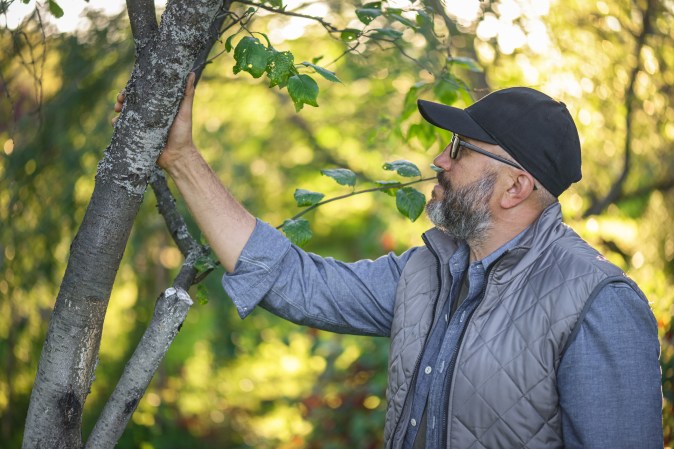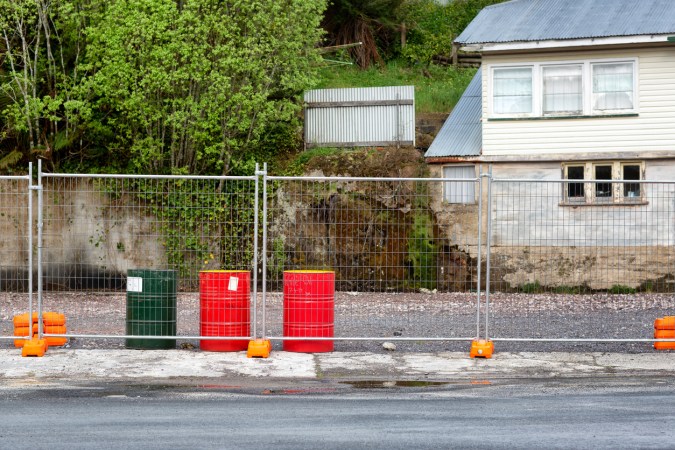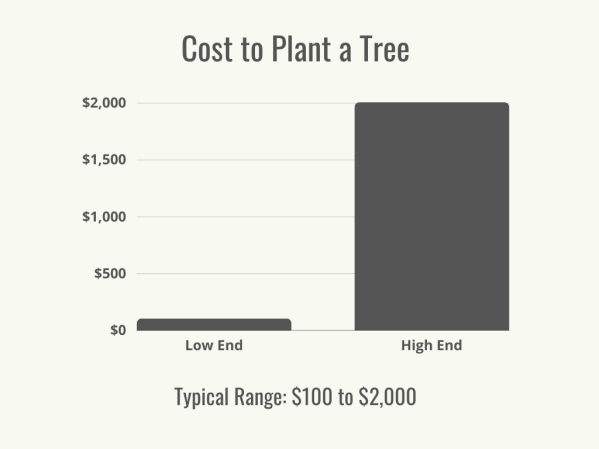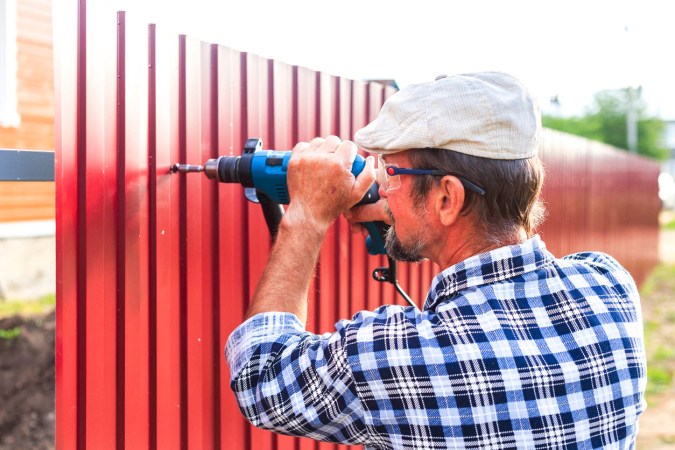We may earn revenue from the products available on this page and participate in affiliate programs. Learn More ›
Highlights
- Tree transplanting costs typically range from $300 to $10,000, while the national average cost to transplant a tree is $800.
- The main factors that affect the cost to move a tree include the size and accessibility of the tree, the soil condition, the distance of the move, labor costs, the type of equipment needed, preparation and cleanup, and follow-up services.
- A homeowner may want to move a tree that’s too close to utility lines or the home’s foundation, one that has insufficient room for growth, or one that they’d prefer to have elsewhere in their yard.
- In most cases, tree transplantation is a task best left to professionals—especially for large trees. A homeowner may be able to move a small tree, but it’s a physical job that not all homeowners will be able to complete.
Trees provide beauty, shade, a home for wildlife, clean air, and even improved mental health for those who get to enjoy them. Trees can also help boost curb appeal and increase property value. Sometimes a tree is planted in a spot that it outgrows, such as being too close to the house, garage, shed, or utility lines. And sometimes homeowners sell their house but don’t want to part with a tree or trees that hold special sentimental value. In these cases, it is worth it for the homeowner to look into the cost of tree removal and replanting.
Professional tree moving, or tree transplanting, is the act of moving a tree from one location to the next. There are many factors to consider before homeowners decide whether to proceed with a tree transplanting project, including the budget and potential risks involved. According to Angi, the cost to transplant a tree ranges from $300 to $10,000, with a national average of $800. Using this guide, homeowners can find out more about what goes into determining the cost of transplanting trees.
Factors in Calculating Tree Transplanting Cost
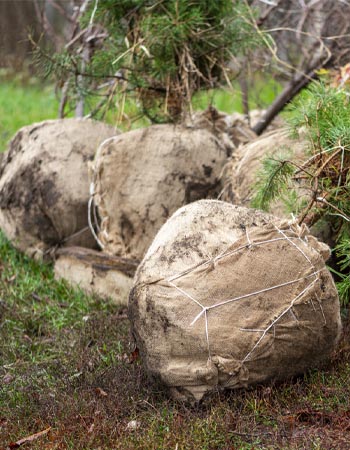
Determining a budget to transplant a tree can be challenging given the various factors to consider. Some of the key components that influence the cost of a tree transplanting project include tree size, tree accessibility, soil condition, distance the tree needs to be moved, equipment required, and labor time and fees. Prep work, cleanup, and tree maintenance also influence the price.
Tree Size
Tree size is one of the most important factors in figuring out the rate to transplant a tree. It costs in the range of $300 to $500 to transplant a small 5- to 10-foot tree with a trunk width of less than 2 inches. Homeowners can expect to pay more than $1,500 to move a large tree in the same yard with a trunk width between 10 and 15 inches and sprawling branches and a giant root ball. For pros to move a tree to a site miles away, the price can be around $5,000. Full-grown tree transplants will cost even more. Extra large trees, also called mega trees, have a trunk diameter of 16 to 40 inches and can cost $3,500 to over $10,000, since cranes and customized frames to support the root ball during transport may be necessary.
Tree Accessibility and Soil Condition
The accessibility of both the current and new location of the tree dictates the price of the project. Some estimates are that the price can increase by 25 percent to 50 percent if the tree is difficult to reach. Issues such as hilly land, large rocks, large branches growing over the house that need to be lowered by rope after being cut, an underground septic system near the tree, fences, power lines and underground utilities, buildings, and concrete foundations can reduce accessibility and make the task more challenging when homeowners are replanting a tree. There is no doubt that the price is least expensive on sites with open space around the tree and no fencing.
The condition of the soil can also impact the price of the project. The best conditions exist when the soil is dry, level, and easy to dig. Soil that is wet, frozen, muddy, or rocky or that consists of clay soil is more difficult to dig, making it pricier overall to move and replant trees.
Move Distance
The farther the tree needs to travel to the new location, the more expensive the transplantation project will be overall. A simple move by hand can cost $300, while it can reach $1,500 if the tree needs to travel 50 to 100 miles. Homeowners are advised to add $5 to $10 per mile minimum for travel to a different site; this can increase to $90 or more per mile if over-width permits are needed to move extra large trees.
Labor
The cost of labor depends on the size of the tree, the methods used to move it, and the kind of equipment used. Since tree specialists work by the hour, complex jobs that take longer will cost more. Also, when projects are more complex—for example, involving large trees that need to be moved or obstructions like power lines that are in the way—safety risks increase, which also raises the fees. To conduct an initial inspection to see what the project will entail, an arborist will typically charge from $100 to $250 per hour.
Landscapers tend to charge $50 to $100 per hour to dig with hand tools to move a small tree. When a spade machine excavator is necessary for larger trees, homeowners can expect to pay $300 to $700 per tree. When machine digging requiring a large crew is necessary, the price goes up to $1,000 to $5,000 per tree.
Equipment Required
Depending on the size of the tree and complexity of the job, different types of tools and tree moving equipment will be needed. The cheapest option is digging up a small tree by hand with a tree digger. Professional arborists use a hydraulic tree spade for larger trees. This equipment costs at least $500 to $1,000, or $200 to $350 per hour on average. If a truck is needed to transport the tree, that could cost $10,000 or more. In situations where it is very difficult to access the tree, a crane may be necessary. Crane rentals with operators cost $350 to $1,500 minimum for 4 to 6 hours.
Prep Work
If either the current or new location requires prep work, that will increase the cost. This could be an additional hourly rate of labor for up to 1 to 10 hours, depending on what work is necessary. Typical prep work includes root pruning before the tree is relocated; this costs between $150 and $500, depending on the size of the root system, complexity, and accessibility. Tree trimming is important for the plant to fit inside the spade machine for transplantation and costs $50 to $125 per hour. If removing extra dirt is necessary, that will cost $140 to $230 per cubic yard. Finally, machine tilling has a rate of $50 to $100 to prepare the new planting site.
| Prep Task | Average Cost (Materials and Labor) |
| Dirt removal | $140 to $230 |
| Machine tilling | $50 to $100 |
| Root pruning | $150 to $500 |
| Tree trimming | $50 to $125 per hour |
Cleanup
Transplanting trees leaves a mess in the yard, so some extra investment may be needed for cleanup. Soil, debris, and tree-related waste like leaves and branches will need to be removed once the project is complete. Pros typically take care of cleaning up the yard, but homeowners are advised to ask if cleanup is included in the original quote. Other typical cleanup tasks include filling holes, repairing landscaping, and mulching. Filling in holes with topsoil costs $10 to $50 per yard. Landscaping repairs come with a price tag of $50 to $100 per hour. Finally, adding new mulch costs $35 to $70 per yard, including delivery and installation.
| Cleanup Task | Average Cost (Materials and Labor) |
| Adding new mulch | $35 to $70 per yard |
| Filling holes with topsoil | $10 to $50 per yard |
| Repairing landscaping | $50 to $100 per hour |
Follow-Up Services
Once the tree is planted in its new home, there are some follow-up tasks to take care of to ensure the tree continues to thrive. First of all, homeowners will want to consider staking unsteady or larger trees, especially in windy areas. Next, they’ll want to make sure the tree gets enough water based on the local climate, soil type, and rainfall. In general, homeowners will want to plan to water the tree deeply and regularly during the first few weeks. Using a drip system can be effective. As the tree begins to establish itself, the homeowner can reduce the frequency of watering. Consistent fertilizing and pruning are also important. Homeowners will want to make sure they use the right type of fertilizer for the specific tree species. Pruning encourages tree growth and helps shape the tree, and removing dead or diseased branches will allow the healthy ones to thrive. For guidance on tree maintenance, homeowners can ask an arborist, gardening center, or landscaper. Many pros offer follow-up support after tree transportation for an additional cost of about $100 to $350 per visit.
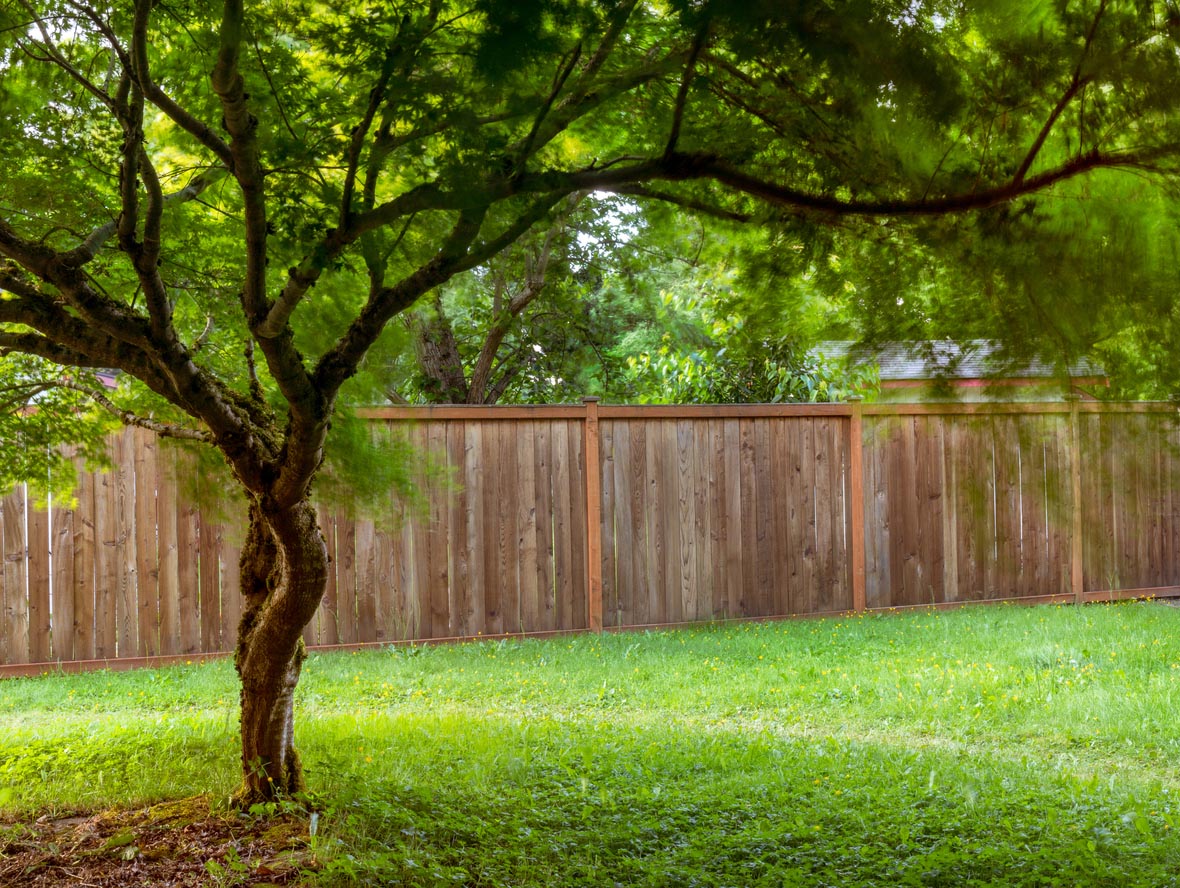
Tree Transplanting Cost by Type of Tree
Tree size is one of the most important factors in determining the price to transplant a tree, along with the distance it has to travel. Tree movers measure a tree’s diameter to set pricing. For young trees, they measure the circumference at ground level by wrapping measuring tape around the tree base. For saplings less than 4 years old, they measure the trunk caliper, which is the tree’s circumference at a height of 0.5 to 1.0 foot above the ground. Finally, older trees are measured by determining the diameter breast height.
| Tree Type | Transplanting Cost (Materials and Labor) |
| Small (30 feet or less) | $0 to $1,500 |
| Large (30 to 80 feet) | $1,500 to $5,000 |
| Extra large (over 24-inch trunk width) | $3,500 to $10,000 and up |
Small
A tree with a height of 30 feet or less is considered a small tree. This includes fruit trees, mimosas, and dwarf varieties. Small trees are the easiest to transplant, since they are usually less complex, require less equipment, and have minimal root structure. The price to transplant a small 5- to 10-foot tree with a trunk width of less than 2 inches within the same yard is typically $300 to $500, though costs can range from $0 to $1,500 in total.
Large
Medium-size trees, such as some oak varieties and weeping white spruce, are between 30 and 60 feet tall, while large trees grow to about 60 to 80 feet tall with a trunk over 10 inches. Transplanting large trees of this size requires heavy equipment, given their sprawling branches and giant root balls. Homeowners can expect to pay upwards of $1,500 to move a large tree in the same yard. To transplant it several miles away, homeowners can pay $5,000 or more.
Extra Large
Extra large trees, also called mega trees, have a trunk width over 24 inches. These huge trees require a tree transplanting machine to move them safely, such as a crane or customized frame to support the large, delicate root balls. For that reason, costs can range from $3,500 to $10,000—or even higher. Sometimes trees of this size are simply too difficult to move, and an arborist may recommend against it.
Do I Need Tree Transplantation?
Tree transplantation enables homeowners to preserve sentimental value, improve property aesthetics, keep the property safe, ensure damage to the home or another structure does not occur, and optimize benefits that trees offer. Homeowners can keep the following considerations in mind when deciding whether to move forward with transplanting a tree.
Close Proximity to Utility Lines or Foundation
If a tree is growing directly under or very close to power lines, it is a good idea to move it to a safer location with more room. A tree that grows too close to power lines is a safety hazard, so moving it can help prevent the chance of power outages and other problems from occurring. In the same way, if a tree’s roots grow too close to the foundation, cracks in the foundation can begin to form and plumbing pipes below ground can be damaged.
Insufficient Room for Growth
Trees that are growing too close to a house, garage, or other structure can damage the exterior, roof, or windows. Trees should be at least 20 feet away from a structure in order to grow without causing damage. Removing a tree that is too close to a home keeps the structure safe.
Homeowner Preference
Transplanting a tree can be about a homeowner’s preferences and sentimental attachment to the tree. A tree can become more than just a part of the landscape—it can hold cherished memories, symbolize growth, have aesthetic value, or be a reminder of significant life events. A tree may also have historical or cultural significance or emotional significance that prompts someone to keep it around, such as being planted by a previous generation of the family. Homeowners might consider transplanting a tree to preserve these personal connections when they move or renovate their property.
Tree Transplanting: DIY vs. Hiring a Professional
In many cases, tree transplanting is an involved task that is best left to one of the best tree removal services. Not only is it challenging physical labor, since many trees are large and heavy, but certain equipment and tools are required to ensure that professional tree transplanting is done correctly and efficiently. Having access to an experienced arborist who knows how to transplant a tree safely is also important to ensure the job is done correctly. Plus, there are risks involved with tree transplanting and safety precautions to take, so it’s best to have a pro manage the entire process. Finally, a pro can also provide guidance on how best to take care of the tree once it is in the new location.
For small trees, DIY is certainly possible and can help homeowners save money. This is best done with trees that are under 10 feet tall and have a trunk less than 2 inches wide if homeowners are planning to transport the trees themselves. Homeowners can also consider hiring a hydraulic tree spade for around $300 to $400 per day. However, this option may not result in huge savings when compared to the cost of hiring one of the best tree-planting services. Plus, homeowners will want to be careful not to damage the tree or the land around it; otherwise, repairs will end up leading to additional cost.
How to Save Money on Tree Transplanting Cost
The cost of having a tree moved from one location to another by a professional tree transplant service can add up depending on a number of factors. Many homeowners look for ways to cut costs when deciding to transplant a tree they love. Luckily, there are a few ways to save money on tree transplantation.
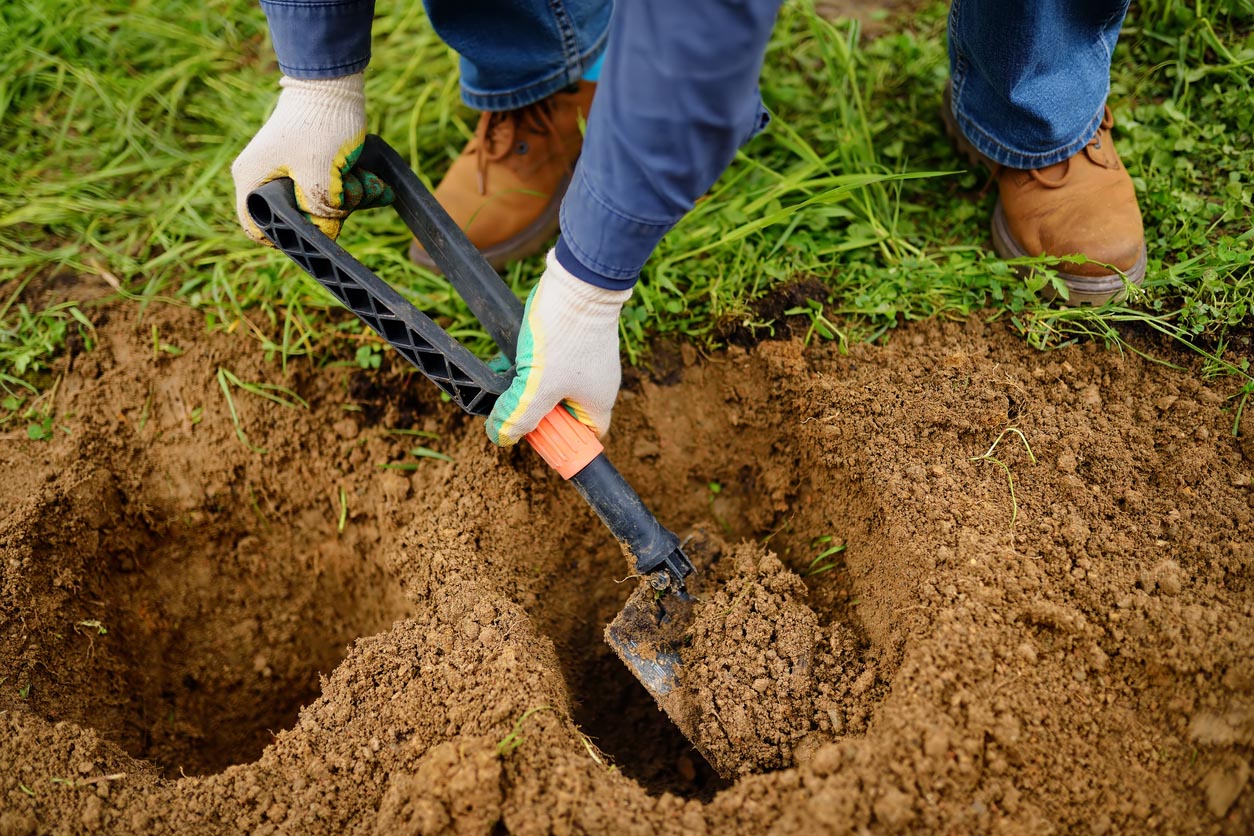
- Try DIY. There are many useful resources that will help you learn how to transplant a tree yourself, so avoid hiring a pro for small trees under 10 feet and with a trunk less than 2 inches wide. With some basic tools, you can carefully dig the root ball out and move the tree to the new location.
- Shop around. Ask for quotes from at least three reputable companies to find the most reasonable rate.
- Prep yourself. Preparing the new site yourself is a smart way to bring down costs to plant a tree.
- Book services all at once. Some companies offer discounts for transplanting multiple trees at one time. Also, ask for a discount if the work takes place when there are additional jobs in the same neighborhood.
- Consider seasonality. In some regions, tree service companies may offer off-season discounts.
- Time it right. Trees are best moved during late summer, fall or, early spring, since a tree’s dormant state in those months will allow for speedy root growth in the new location. If moved at the wrong time, the tree may not survive, which could result in wasted money.
Questions to Ask About Tree Transplanting
Most tree transplanting projects require the expertise of a professional tree mover or arborist. But before hiring a company to transplant a tree, homeowners will want to ask the right questions to evaluate whether the price and process are a good fit. There are many questions a homeowner can ask, but the following provide a good starting place.
- How long have you been in the tree transplanting business?
- Do you have a certified arborist on staff?
- May I see your proof of insurance?
- Can you share a list of references or reviews?
- Are permits required, and if so, will you pull them?
- Which equipment will your crew use, and what size is it?
- How will you protect my lawn from heavy machinery?
- Will you remove fencing to access the tree?
- Will my tree need any pruning or fertilizer, and does this cost extra?
- Will you provide a detailed estimate, and how long will you honor the quote?
- Does this bid include cleaning up and backfilling the hole?
- What is your cleanup process?
- How long will the project take?
- Can you offer a guarantee for your work?
- Are you available for follow-up visits after transplantation?
- How often will I need to water the tree after you’ve moved it?
- Will the crew be using hard hats and other personal protective equipment to comply with Occupational Safety and Health Administration (OSHA) requirements?
FAQs
Transplanting a tree is a complex process that requires careful evaluation. Most homeowners are likely to have several questions about the costs, benefits, and details of moving a tree from one location to another. The following questions and answers can help address some of these concerns.
Q. How big of a tree can be moved?
Most trees up to 3 feet can be transplanted without professional assistance, but homeowners are advised to hire a professional tree moving service to move larger trees.
Q. What’s the best time to transplant a tree?
Just as the best time to plant a tree is early spring, late summer, or fall, the best time to move a tree is the same. Avoid moving trees during the mid-growing season or in the middle of the summer. Of course, climate and specific tree type will impact the success of the move. Moving a tree when it is dormant is also recommended.
Q. Which tree is the fastest growing?
The fastest-growing trees are weeping willows and hybrid poplars.
Q. What’s the largest tree ever transplanted?
Transplanting mature trees can be quite complex. The largest tree ever to be transplanted was Yonggyeri Ginko, a gingko tree 750 years old measuring 95 feet tall, 108 feet wide (branch span), and a trunk girth of 42 feet. It weighed about 2.75 million pounds.
Q. Do tree roots still grow after a tree is cut down?
Yes, tree roots still grow for some time even after the tree is cut down. This happens because the roots are still alive and continue to try to support the tree.
Q. Is moving my tree worth the cost?
To determine if moving a tree is worth the cost, evaluate the expense, value of the tree, and any risk involved in the project. Also consider the age and species of the tree along with any sentimental value the tree has as well as the conditions of the new site and any permit requirements. If it is too much of a hassle and a pricey endeavor, it may not be worth it.
Q. Will my tree die if I try to move it?
It depends on the species and conditions of the new site. Some well-established trees do not fare well after being transplanted. There is always a risk involved in transplantation. A professional will be able to advise you regarding your specific tree.
Sources: Angi, HomeGuide, Fixr, Guinness World Records

